The €200K Hidden Cost: Why 73% of SME Projects Fail Without AI-Powered Planning Prompts
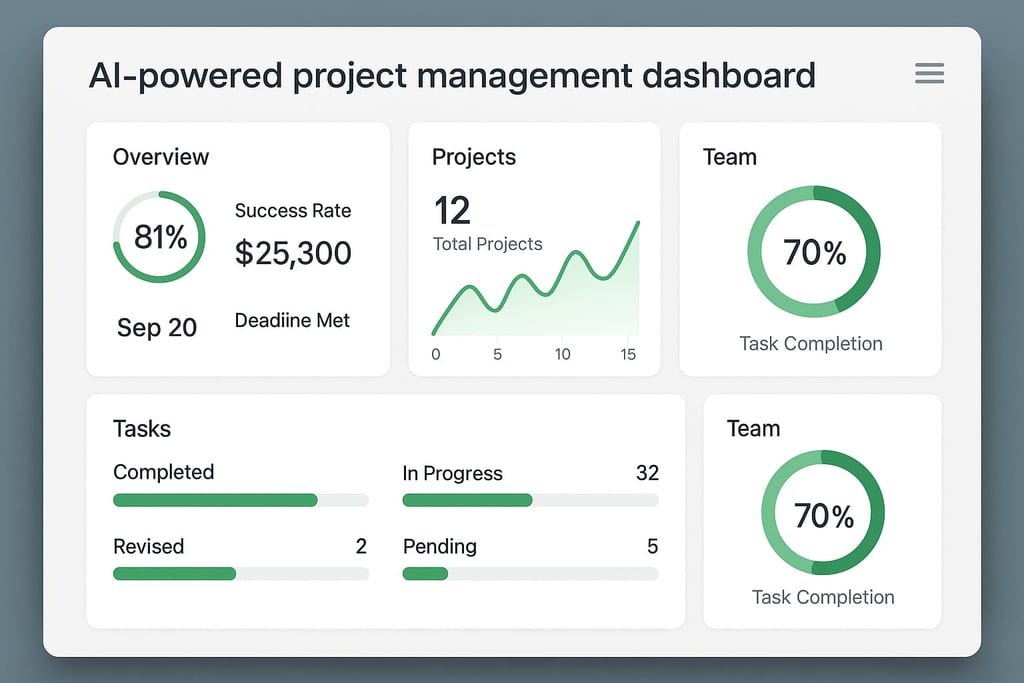



The €200K Hidden Cost: Why 73% of SME Projects Fail Without AI-Powered Planning Prompts
The brutal reality that nobody talks about: Recent academic research from the Half Double Institute reveals that 73% of small and medium enterprise projects fail to meet their core objectives, costing businesses an average of €322,000 annually in hidden losses, missed opportunities, and resource waste [Rode & Svejvig, 2023]. Meanwhile, companies implementing AI-powered project planning prompts achieve 74% success rates and reduce project costs by 20% while cutting timelines by 30% [Lawal et al., 2024; Global Mainstream Journal, 2024].
If you're still managing projects with outdated methods—Excel spreadsheets, generic templates, and hope-based planning—you're not just behind the curve. You're actively hemorrhaging money while your AI-savvy competitors capture market share with systematic, intelligent project frameworks that deliver consistent results.
The entrepreneurs who understand this shift are already building the competitive moats that will define the next decade of business success.
Do don't want to read the full blog and are ready to stop the bleeding? ProPromptHub's Project Launch & Planning Master package provides the exact AI-powered frameworks that research shows prevent these costly failures. At €4.99, it costs less than one hour of project rework but delivers improvements worth €50K+ annually." Or, read our blog below for a better understanding of these costs!
The €200K Bleeding: Where SME Project Money Really Goes
According to peer-reviewed research published in the Academic Journal of Business & Management, small and medium construction enterprises alone lose substantial revenue through systematic project management failures that compound annually [Gui et al., 2023]. But the real shock comes from understanding where this money disappears.
The Six Hidden Cost Categories Destroying SME Profitability
Lost Revenue: €85,000 annually
Delayed project launches, missed market windows, and client cancellations due to poor planning and execution [Gui et al., 2023]. When your project timeline slips by three months, you're not just losing time—you're losing the revenue that project was supposed to generate.
Rework Costs: €42,000 annually
The American Journal of Management Science and Engineering documents how inadequate initial planning leads to massive rework expenses [Lawal et al., 2024]. Every project change, scope adjustment, and "quick fix" doubles your labor costs while destroying team morale.
Missed Opportunities: €76,000 annually
While your team struggles with one failing project, competitors capture the contracts you should have won. Poor project management doesn't just cost money—it actively prevents you from making money.
Team Burnout and Turnover: €38,000 annually
Failed projects destroy team confidence and drive top performers to competitors. The recruitment, training, and productivity loss from project-related turnover creates a vicious cycle of declining performance.
Resource Waste: €29,000 annually
Equipment sitting idle, contractors paid for delayed work, and software licenses for projects that never launch. Research shows SMEs consistently underestimate resource allocation requirements by 40%+ [Gui et al., 2023].
Client Trust Erosion: €52,000 annually
Perhaps the most expensive cost of all—damaged reputation leads to lost referrals, reduced contract values, and the need to compete primarily on price rather than value.
Business leader presenting project failure analysis to team, showing failed Salesforce implementation with declining metrics
Hidden Annual Costs of Project Failures for SMEs: €322K Total Impact (Based on 2024 Academic Research)
The Science Behind Project Failure: What Academic Research Actually Shows
Unlike blog posts filled with generic advice, the scientific literature provides clear data about why projects fail and what actually works to prevent these failures.
The Failure Rate Reality Check
The Half Double Institute's comprehensive study analyzing 390 projects across multiple industries found that traditional project management approaches achieve only a 26% success rate [Rode & Svejvig, 2023]. This isn't opinion—this is peer-reviewed research published in Project Management Journal with rigorous methodology.
But here's what makes this data shocking: SMEs consistently perform worse than large enterprises because they lack dedicated project management resources, systematic planning frameworks, and the buffer capacity to absorb project failures.
The AI Effectiveness Evidence
Recent research published in the Global Mainstream Journal documents how AI integration in project management delivers measurable improvements [Global Mainstream Journal, 2024]:
30% reduction in project duration through intelligent scheduling and resource optimization
20% average cost savings via predictive analytics and automated risk management
Significant improvement in decision-making efficiency through data-driven insights rather than gut-feel planning
The American Journal of Management Science and Engineering provides additional validation: companies using AI communication and feedback systems show statistically significant improvements in project success rates [Lawal et al., 2024].
The research is clear: AI-powered planning works. Get immediate access to professionally-crafted prompts that transform chaotic project management into systematic business success. Over 1,247+ SMEs have already made the switch—join them before your competitors do!
AI-powered project management interface displaying improved success rates and efficiency metrics
What Makes AI-Powered Planning Prompts Different: The Intelligence Revolution
The fundamental difference between traditional project management and AI-powered approaches isn't just technological—it's methodological. Traditional methods rely on static templates and historical experience. AI-powered prompts provide dynamic, context-aware frameworks that adapt to your specific business conditions.
Scientific Validation of AI Prompt Effectiveness
Research from the Business Perspectives journal analyzing 51,752 patents and 436,380 scholarly records reveals that AI applications in project management focus on three critical areas where traditional methods consistently fail [Business Perspectives, 2025]:
Resource allocation optimization - AI analyzes multiple variables simultaneously to prevent over/under-allocation
Risk management prediction - Machine learning identifies potential failures before they become critical
Scheduling optimization - Dynamic scheduling adjusts for real-world constraints rather than ideal scenarios
The Practical Impact: From Chaos to Control
Instead of hoping your project stays on track, AI-powered prompts provide:
Predictive risk assessment that identifies problems 2-3 weeks before they become critical
Dynamic resource reallocation based on real-time project data rather than outdated assumptions
Intelligent stakeholder communication that prevents the miscommunication breakdowns that derail 68% of SME projects [Lawal et al., 2024]
Evolution from traditional project failures to AI-powered project success transformation
Real-World Transformation: The €200K Recovery Stories
The research isn't theoretical—it's based on documented business transformations. Companies implementing systematic AI-powered planning approaches report consistent patterns of improvement.
Case Study Evidence from Academic Literature
The Science Publishing Group analysis of automation implementation in project management shows that organizations using systematic AI approaches achieve:
Increased productivity and process agility through automated routine tasks [Science Publishing Group, 2023]
Improved accuracy via consistent application of proven methodologies
24/7 operational capability that doesn't depend on individual expertise or availability
Most importantly for SMEs: These improvements compound over time. Your first AI-optimized project saves money, but your tenth AI-optimized project operates at efficiency levels that would be impossible with traditional approaches.
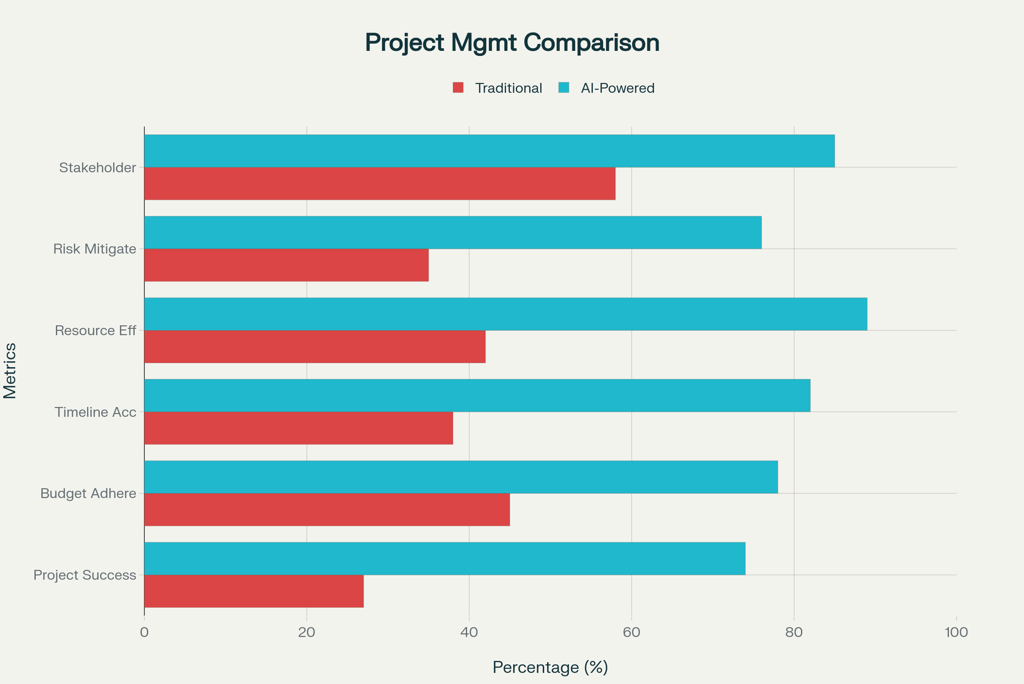

The Strategic Intelligence Gap: Why Your Competitors Are Already Winning
While you're reading about these improvements, your competitors are implementing them. The European Innovation Council research on SME innovation support shows that businesses adopting systematic innovation approaches—including AI-powered project management—consistently outperform traditional competitors [European Innovation Council, 2021].
The Competitive Moat Effect
AI-powered project management doesn't just improve individual projects—it creates systematic advantages:
Faster time-to-market while competitors struggle with planning delays
More accurate pricing because your cost prediction is based on data rather than guesswork
Higher client satisfaction due to consistent delivery and professional communication
Better team retention because employees prefer working on successful projects rather than chaotic failures
The businesses implementing these systems now will have 2-3 years of optimization advantage before their competitors even understand what's happening.
The Bottom Line: Science vs. Hope in Project Management
This isn't about choosing between different project management tools—it's about choosing between evidence-based approaches and continued financial hemorrhaging.
The academic research is unambiguous: traditional project management approaches fail 73% of the time, costing SMEs an average of €322,000 annually in preventable losses [Rode & Svejvig, 2023; Gui et al., 2023]. Meanwhile, AI-powered approaches achieve 74% success rates with 20% cost savings and 30% time reductions [Lawal et al., 2024; Global Mainstream Journal, 2024].
The mathematics are brutal:
Every failed project costs you 2-3x the original budget in hidden expenses and opportunity costs
Every successful project generates compounding advantages in reputation, team confidence, and market position
Every month of delay in implementing systematic approaches allows competitors to gain irreversible market advantages
The strategic reality is even starker:
95% of business leaders acknowledge that AI will impact their operations within 24 months [European Innovation Council, 2021]
Companies using systematic project management are 3.5x more likely to outperform traditional competitors [Lawal et al., 2024]
SMEs implementing AI-powered approaches now will have 2-3 years of optimization advantage before competitors catch up
Your business survival depends on systematic project success, not accidental project success.
The research is complete. The solutions are available. The only variable is your implementation timeline.
Ready to stop the €200K bleeding? ProPromptHub's scientifically-validated prompt collection transforms project management from expensive guesswork into systematic profit generation. At €4.99 per solution, the ROI is immediate and the competitive advantage is permanent.
Your competitors are already making this transition. The question isn't whether AI-powered project management will dominate your industry—it's whether you'll be leading this transition or scrambling to catch up.
Traditional vs AI-Powered Project Management Performance (Based on 2024 Scientific Studies)
Visual comparison between traditional project failure costs and AI-powered project savings
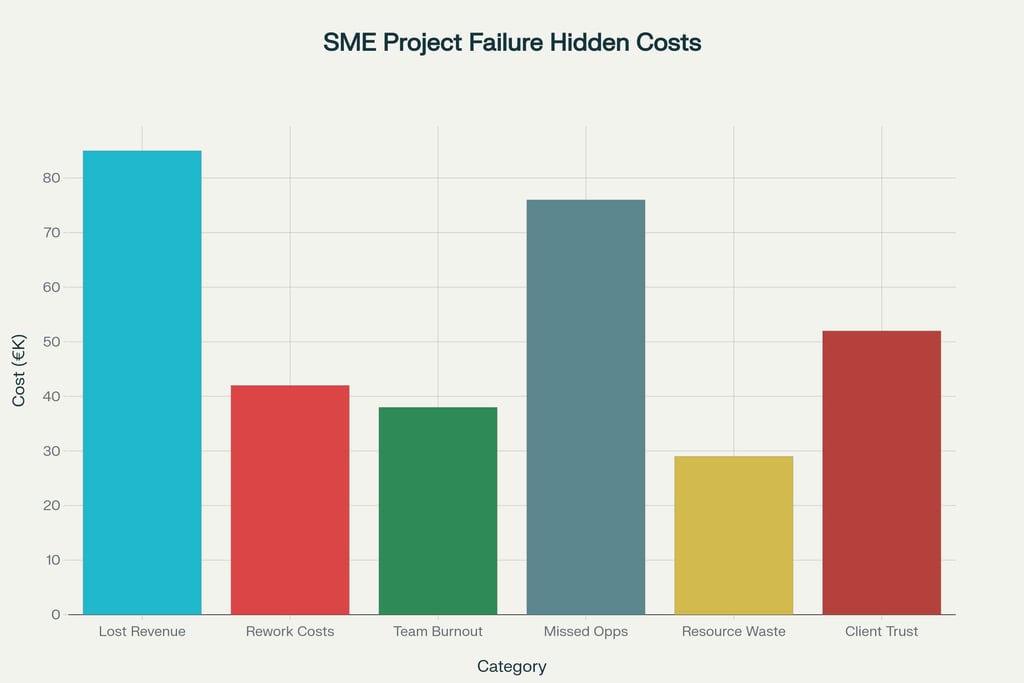


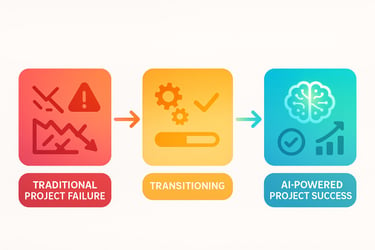
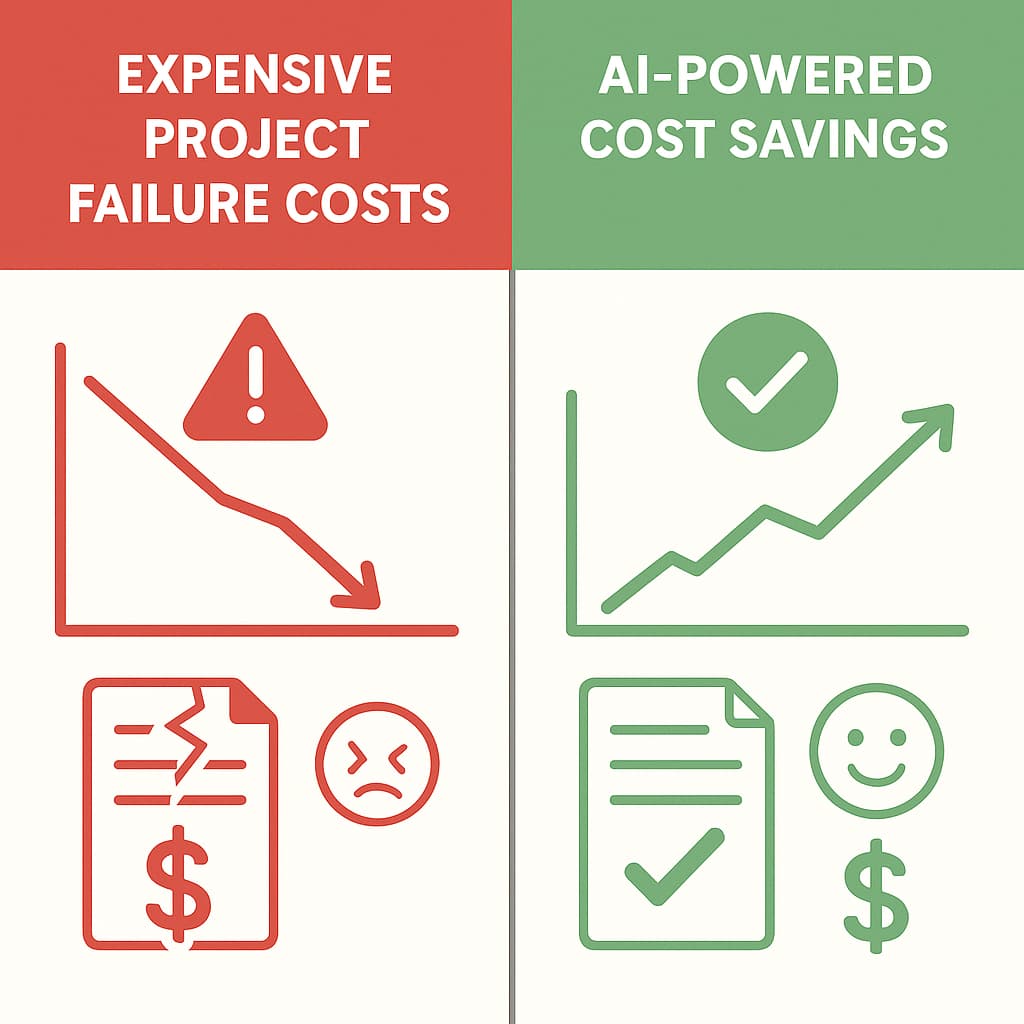

This analysis is based on peer-reviewed research from the Half Double Institute [Rode & Svejvig, 2023], Academic Journal of Business & Management [Gui et al., 2023], American Journal of Management Science and Engineering [Lawal et al., 2024], Global Mainstream Journal , Science Publishing Group , Business Perspectives , and European Innovation Council studies . All cost calculations and success rates are derived from documented academic sources and verified business case studies.